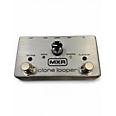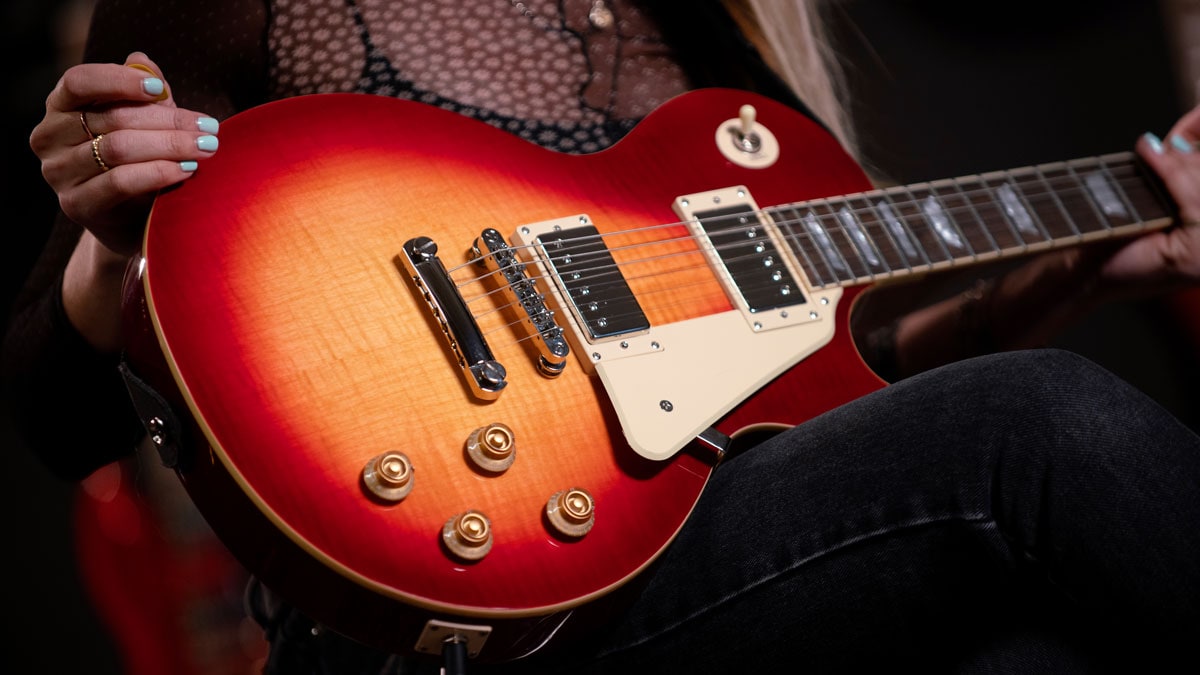The new Epiphone Inspired by Gibson Collection examines the rich legacy of Gibson electrics, recreating seminal models so that new players can have access to the instruments that helped shape modern music. The line includes SGs, 335s, Les Pauls, and even a Flying V. We invited guitarist Arianna Powell to try out a few of them and share her first impressions.
Arianna Powell has quickly become one of pop music’s most sought-after touring guitarists. “My dad was a guitar player and that's what initially fascinated me about guitar—he played all kinds of music in the house, from Bob Dylan to the Beatles to Black Sabbath. I started in high school, and then went to Pittsburg and started playing in a bunch of bands there—cover bands, original bands, tons of stuff,” she recalls. “One of the clubs I played used to have a TV screen and they would play live shows of different pop artists. One of the shows was Beyoncé—she had a girl band at that time, and I saw that and was like, ‘I want to do that. I want to play for a major artist.’ I moved to L.A. and started doing the same thing—just playing wherever I could. Shortly thereafter, I started touring with Nick Jonas, and then I got a few other gigs—playing for Black Eyed Peas, and an artist named JJ Lin who’s popular in China. For the last year, I’ve been playing with Halsey and in the midst of her world tour right now.”
Powell, who first started playing guitar with an Epiphone Les Paul, currently wields a stunning white 1963 Gibson Les Paul SG Custom Reissue with Maestro Vibrola. Deeply knowledgeable about the history of both brands, she showcases four of the new Epiphone Inspired by Gibson guitars and discusses their story and sound. For each model, Powell uses her standard method for checking out a guitar. “Usually when I sit down with a guitar that I haven’t played before, I typically start with the neck pickup—just to kind of hear how it sounds, play a couple of chords, maybe without the volume of the amp. And then I go through the switches and check out the different pickups and the pickup combinations. Obviously, aesthetically, I notice what’s going on, too.”
Epiphone SG Standard ’61
“This [Epiphone SG Standard ‘61] is really similar to the one I have in that the scale length of the neck is the same, and I’ve got the two volume and the two tone knobs. It feels smooth, and it’s just beautifully intonated, all the way from the low E string, up until the high frets.” Inspired by the build and specs of the original 1961 Gibson SG, Epiphone’s version features a classic Vintage Cherry finish, a Kalamazoo headstock and two new Probucker pickups—widely renowned for their excellent reproduction of classic vintage tone.
Epiphone Les Paul Special
Next, she picked up the Epiphone Les Paul Special. “This color is really cool. It’s called TV Yellow because back before there was color TV, you wanted your guitar to translate as white on a black and white screen. If it was white, it might just catch lights and become way too glaring.” Adopted in the punk era as a crunch-toned go-to, Epiphone’s recreation of the original Gibson Les Paul Special pairs carefully-reproduced dual Soap Bar Pro P90 pickups with a single-cutaway shape.
Epiphone Firebird
Powell then played the Epiphone Firebird—the first time she has ever tried this body style. “The Firebird is really interesting. It’s kind of the reverse of some familiar offset guitars. The tuners are on this other side—below you rather than above—which is slightly counterintuitive at first, but then when once you're there, it really makes sense.” Revered for its unique “reverse” body shape, its neck-through design, with mahogany sides and Probucker FB 720 pickups, offers up rich tonal quality. “What’s cool about the Firebird is it’s just one long stick of wood. This wood runs from the body, through the neck, into the head, and so that allows for a lot of sustain. It has a much throatier, trebly sound than a Les Paul or an SG.”
Epiphone Les Paul Standard '50s
Powell finished the session with a familiar Epiphone Les Paul Standard '50s. “One of the first guitars I ever owned was an Epiphone Les Paul, much like this one with the cherry sunburst and everything. I think what really inspired me to get that guitar is that it’s sort of an American icon. You get off the plane in Nashville or you walk around Austin, and there are Les Pauls everywhere. It’s kind of an all-encompassing guitar. You’ve got the history, the look and the vibe.” Epiphone’s nod to the LP Standard ‘50s includes period-accurate finishes and new Probucker pickups.
“Having a Les Paul as a kid really benefitted me—I think because it was such an inspiring instrument, and it was that guitar I couldn't wait to get home from school every day and play. I couldn't wait to run up to my room and learn whatever new song I was working on, or whatever guitar solo I was transcribing at the time. It’s important to have an instrument that you really love because it’s going to inspire you to play it more and just get better.”
Keep up with Arianna Powell @guitarianna.


